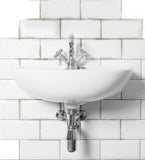 Mold can build up anywhere there is standing moisture, and the result of built up mold can be airborne mold particles. Discover how mold particles in your air could be affecting your allergies, asthma, and overall health.
Mold can build up anywhere there is standing moisture, and the result of built up mold can be airborne mold particles. Discover how mold particles in your air could be affecting your allergies, asthma, and overall health.
Fast Facts
Black, White,
orange, green & brown
|
0%
visibility
|
45
percent
|
7/10
incidents
|
| Mold comes in all colors and sizes |
Much mold goes unseen due to the type or size of outbreak, or because it grows behind walls and inside ceilings
|
The ideal indoor humidity level is between 40 and 50 percent
|
In 7 out of 10 incidents, black mold health issues become permanent
|
What is mold?
Molds are microscopic organisms that are pervasive in any outdoor environment. However, they may be brought inside via clothing, shoes and soils. Mold needs only a food source, warm environment and moisture to grow. Mold may be invisible to the eye or may look like furry growth, black stains or specks of black, white, orange, green and brown on surfaces. Large infestations of mold can usually be seen or smelled.
According to the American Academy of Allergy, Asthma & Immunology (AAAAI), molds are an key trigger of allergic rhinitis which affects nearly 40 million Americans. Mold spores contain allergens, which some immune systems recognize as dangerous. They can trigger allergic reactions including nasal stuffiness, eye irritation, wheezing, coughing, and hay fever-like symptoms.
Where is mold?
Mold and related fungi are likely to grow in environments including:
- Homes or buildings which have sustained flooding or water damage
- Behind walls or covered ceiling areas that are concealing leaks
- Basements or crawl spaces
- Near windows
- Under sinks
- In bathrooms
- Near leaky pipes
Tips for dealing with mold
- Wear a filter mask if mold exposure is anticipated
- Change heating and cooling filters regularly
- Provide adequate air circulation
- Clean washable surfaces with a bleach solution
- Get advice and help, since many molds and fungi can survive surface-level removal just to re-grow
- If the moisture problem is persistent, address it with a dehumidifier. Indoor humidity levels should stay between 40-50 percent
- A specialized air purifier or filter designed to kill airborne mold spores not just filter them from the air.
View Top 3 Air Purifiers for Mold Browse All Air Purifiers for Mold

 Mold can build up anywhere there is standing moisture, and the result of built up mold can be airborne mold particles. Discover how mold particles in your air could be affecting your allergies, asthma, and overall health.
Mold can build up anywhere there is standing moisture, and the result of built up mold can be airborne mold particles. Discover how mold particles in your air could be affecting your allergies, asthma, and overall health.